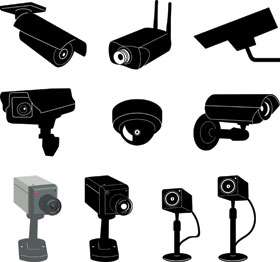

Closed Circuit Television (CCTV) plays a valuable role in combating crime through a combination of both proactive and reactive crime prevention measures. A classic example of this is the use of CCTV as deterrence to all potential perpetrators, including staff, thus implying that they will be aware of the fact that their actions are recorded.
On the reactive side, CCTV can assist the police in identifying the perpetrators and can also be utilised in various criminal justice procedures as evidence in a court to ensure fair and legal prosecution to all parties involved. However, the latter can only be accomplished if CCTV systems are accepted as a reliable source of evidence.
Through the Consumer Goods Council of South Africa in partnership with Business Against Crime Western Cape (BACWC) working groups were formed to determine: A Recommended Industry Guideline for CCTV surveillance systems in South Africa. The first version of this document was compiled in 2004. This empowered business owners with knowledge to make informed business decisions before investing large amounts of money in a business solution. The reviewed and updated third edition will be published in March 2013.
This document provides guidelines for optimisation of CCTV that will ensure appropriate/sufficient quality images under different physical and environmental circumstances in and around businesses for monitoring, detection, recognition and identification with the specific purpose of generating video footage that will support investigations and successful prosecution.
The Role Players and Responsibilities are guided by Chapter 2 and expand on the following roles:
* The End User.
* System Provider.
* Industry Bodies and NGOs.
* The Justice System.
Chapter 3 explores the operational requirements (OR) that are fundamental to the design, testing and operation of an effective CCTV system. This includes:
* Generic Operational Requirements, that will enable users to spec their needs at the right pitch;
* How to identify target activities to be observed;
* Why these activities should be observed;
* How to handle incidents are observed;
* How to determine the standard of picture quality;
* Required result of a successful response to activities;
* Site layout.
Although Technical Aspects are addressed in Chapter 4, the aim was to limit specifications that might lead to the Recommended Guidelines being outdated in the near future due to technology developments.
Installation and Management Aspects are addressed in Chapter 5 and consists of:
* Restrictions of installed cameras, as this may include the detection of movement rather than identification; black and white systems are insufficient for identification of clothing and vehicle colour; the use of compression techniques may result in low-resolution images.
The guidelines in this section include:
* The selection of a suitable service provider;
* Camera selection, placement and picture quality;
* Quality and routing of cabling;
* Existing infrastructure and layout of premises;
* Software and other system related requirements;
* Power management;
* General risk considerations;
* Training programmes, training and system manuals and
* Guidelines on the maintenance and management of the system.</i>
As the importance of competent operators and system users cannot be underestimated, CCTV Staffing and Development in Chapter 6 elaborates on:
* Recruitment selection techniques
* Training aspects of system operators
* Requirements for training courses and training manuals.
The purpose of including the Legal and Evidentiary Aspects in Chapter 7 of this document is to guide the standardisation of protocols in the handling of video/DVD or other material that has evidential value that is in the possession of private persons employed by the industries.
During the investigation of offences committed and incidents in chain stores, the visual footage, captured on CCTV equipment is of crucial importance during the investigation and procedures that could follow.
This document also includes recommended checklists for operational requirements of the camera, recommended basic formats for basic affidavits and a recommended general checklist for the CCTV system.
The experts who shared their expertise in compiling this document included representatives from the CGCSA, BACWC, CCTV industry participants, SAPS, NPA (National Prosecuting Authority), retailers and other business owners.
For further information or to order a copy of the Recommended CCTV Industry Guidelines contact Selma Visser on (T) 0861 101 726 or e-mail [email protected]

© Technews Publishing (Pty) Ltd. | All Rights Reserved.